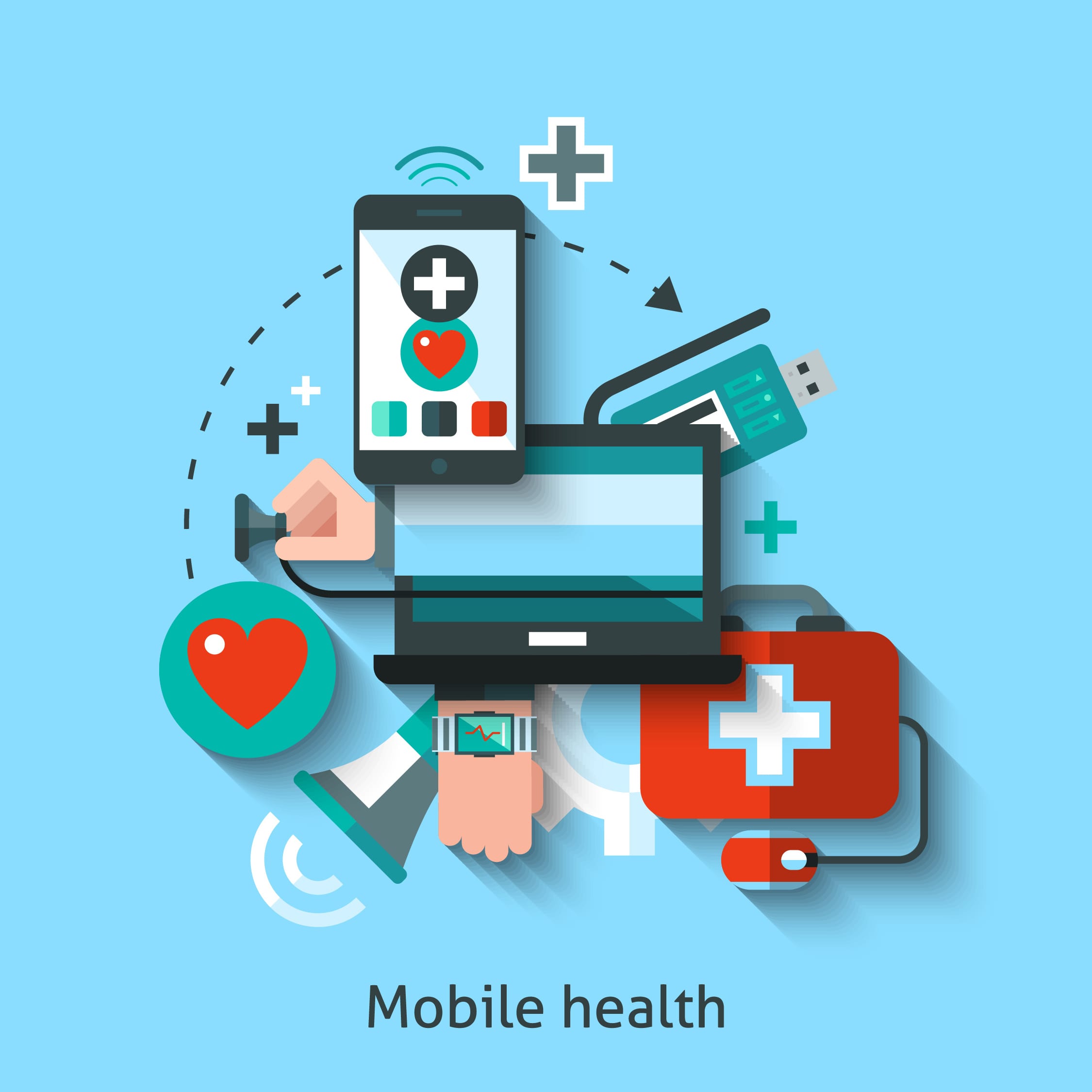 According to Pew Research Center, nine in 10 people have a cell phone as of 2015 and half of all Americans keep a tablet device in their homes. Using these handy devices, consumers these days take advantage of all sorts of mobile applications to make certain parts of their lives that much easier, from budgeting to shopping and fitness tracking to dating, and mHealth, or mobile health, occupies the space in this arena reserved for specifically for healthcare.
According to Pew Research Center, nine in 10 people have a cell phone as of 2015 and half of all Americans keep a tablet device in their homes. Using these handy devices, consumers these days take advantage of all sorts of mobile applications to make certain parts of their lives that much easier, from budgeting to shopping and fitness tracking to dating, and mHealth, or mobile health, occupies the space in this arena reserved for specifically for healthcare.
But what is mHealth exactly and how does the Total Triage Patient Experience Platform use mHealth technology to enable your nurses to better serve their patients and caregivers?
What is mHealth?
Simply put, mHealth is a subset of telehealth technology. Telehealth has often been used as a catch-all term for the various types of technologies that enable remote care, such as remote patient monitoring (RPM) tools, which is another terms that will often be featured in discussions about mHealth. But mHealth, to borrow language from the World Health Organization and the National Institutes of Health, is specific to the use of mobile devices and wireless technologies “to support the achievement of health objectives” (WHO) and “to improve health outcomes, health care services, and health research” (NIH).
Of the many healthcare objectives that mHealth technologies aim to achieve, they can include:
- Improved communication between patients, caregivers, and health workers
- Improved data collection, management, and analysis
- Educating consumers about preventative health care services
- Enabling mobile self-care
- Disease surveillance
- Treatment support
- Epidemic outbreak tracking
- Chronic disease management
- Capitalizing on mobile phone penetration in developing nations to provide greater access to quality health care to remote and high-need populations.
The benefits of mHealth technology are universally applicable and cannot be understated. For example, the WHO has reported a global deficit of quality healthcare workers (doctors, nurses, and midwives) across 57 countries, but with the recent proliferation of mobile devices in developing nations, mHealth technologies have enabled organizations to make great strides in improving access to quality care. So how does the Patient Experience Platform, as a product of mHealth technology, create value for you?
The Power of the Patient Experience Platform
In healthcare, providing quality patient care should be the main goal. But the work of healing also extends to the health of the hospice and home care agency itself. An agency in poor health will struggle to score and maintain high consumer ratings on HCAHPS and social media. What does a sick agency look like? It loses quality nurses to burnout, cannot provide clinical afterhours care, or lacks the tools to monitor and act on valuable performance data.
The Patient Experience Platform was built by nurses for nurses to treat the all-too-common ailments plaguing hospice and homecare companies, including:
- Time. The time it takes for caregivers and patients to connect to a qualified RN, no matter the time of day. And the time nurses need to recuperate from taxing on-call schedules.
- Compliance. Difficulty measuring and tracking performance as well as enforcing consistency across the company to meet increasing CMS quality requirements.
- Cost. Difficulty ensuring maximum reimbursement because of excess 911 calls and ER visits and inability to track and decrease certain costs, such as costs per call and overstaffing expenses.
- Continuity of care. Inability to ensure real-time patient documentation and uniform quality of care during business hours and afterhours.
- Competition. Inability to mitigate nurse turnover and secure new patients because of burnout, outdated technologies, and potential negative impact on survey scores and online reputation.
As an accelerated mobile communicator that also enables recording and reporting for quality assurance and ongoing business analysis, the Patient Experience Platform is an app that all your staff members utilize on a daily basis to counter all of the ailments listed above. And the results are clear:
- Field nurses who use the Patient Experience Platform have 52% more time during their work days to spend on providing critical care versus dealing with interrupters.
- Clinical execs report an overall 18% reduction in nurse turnover.
- Caregivers and patients enjoy an average 32 second wait time to talk to a registered nurse versus the industry average of 33 minutes.
- CEOs enjoy improved survey scores and HCAHPS ratings.
- CFOs may cut spending on supplementary phone support afterhours by 60%.
- COOs may see an incredible 88% drop in patient and caregiver calls to 911 because of prompt nurse response times and quality continuity of care.
Experience the benefits of the Patient Experience Platform for yourself. Contact a Total Triage rep today to schedule a free demo.
Sources:
http://news.careinnovations.com/blog/what-is-mhealth-how-is-it-different-from-telehealth
https://searchhealthit.techtarget.com/definition/mHealth
https://en.wikipedia.org/wiki/MHealth


